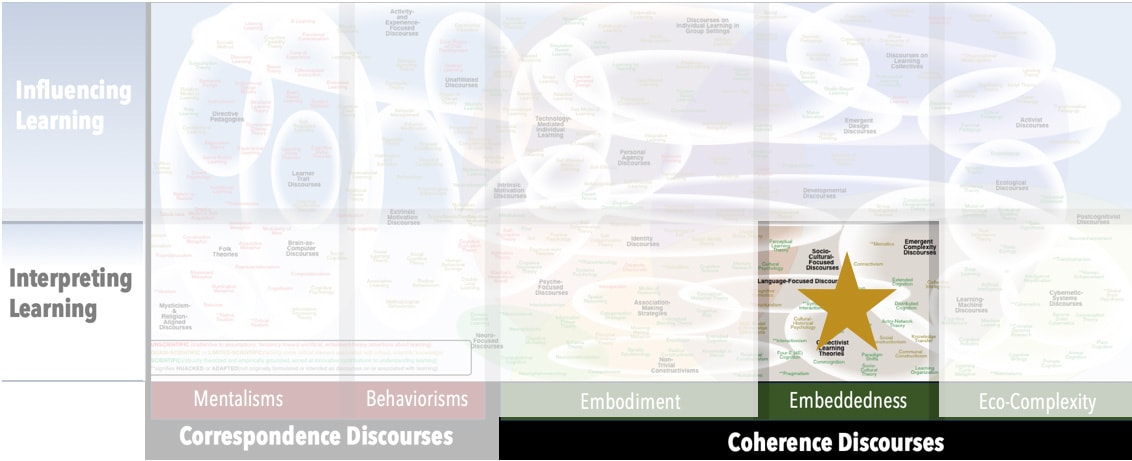Focus
Networked activity as a lens to view learningPrincipal Metaphors
The grounding image of Connectivism is a network.- Knowledge is … all possible activity distributed across a discernible network
- Knowledge is … coherent activity across a discernible network
- Learner is … a dynamic system (at any level of human activity)
- Learning is … increasing network complexity by creating connections
- Teaching is … supporting the development of network complexity and the ability to traverse networks.
Originated
2000sSynopsis
Connectivism is more descriptive than explanatory. It looks across any and all phenomena associated with learning and knowledge, and it posits that such phenomena can be characterized in terms of systems and networks.Commentary
Connectivism is perhaps better seen as a mash-up than an innovation. In its sweep across such phenomena as brain function, personal sense-making, human interaction, tool use, interactivity, collectivity, and other complex phenomena, it echoes but does not elaborate the insights of more focused Coherence Discourses, especially those associated with Complex Systems Research.Authors and/or Prominent Influences
George SiemensStatus as a Theory of Learning
Connectivism is more a way of looking across theories of learning than a theory of learning itself.Status as a Theory of Teaching
Further to the critique, noted above, when and where Connectivism offers advice on teaching, it tends to echo but not elaborate the insights of more focused Coherence Discourses.Status as a Scientific Theory
Connectivism has some strong affiliations with scientific theories of learning, but is not itself supported by substantial evidence.Map Location

Please cite this article as:
Davis, B., & Francis, K. (2019). “Connectivism” in Discourses on Learning in Education. https://learningdiscourses.com.
⇦ Back to Map
⇦ Back to List
